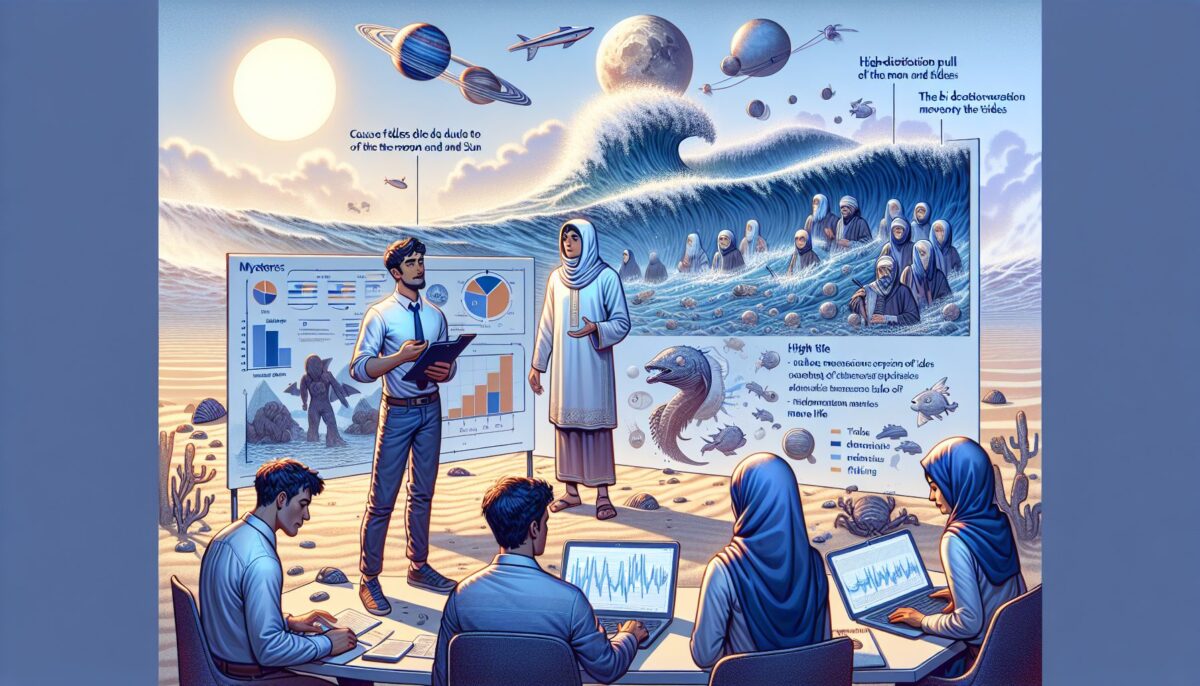At a distance, the rhythmic ebb and flow of the ocean’s tides may seem like another natural occurrence, akin to the rising and setting of the sun. However, under these heaving waters lies a complex interplay of astronomical and earth-based forces. With monumental impacts on marine life, shipping routes, and even our planet’s climate, the phenomenon of tides is indeed a fascinating subject requiring a closer look.
More about the mystery of tides
The Makings of Tides: Astronomical Origins
Starting at the very core of the matter, tides are primarily shaped by the gravitational pull of the moon, and to a lesser extent, the sun. When their gravitational forces align during the lunar and solar eclipses, they conjure the highest (‘spring’) tides. Conversely, when the sun and moon sit at right angles to each other, their gravitational forces counteract to some extent, resulting in the lowest (‘neap’) tides.
Not to forget, our planet plays its part too. The Earth accelerates in its orbit faster than the moon, creating a ‘bulge’ of water on the side farthest from the moon. This bulge, coupled with the direct pull of the moon’s gravity, results in two high tides and two low tides every lunar day—an interval of 24.8 hours.
The details of how tides are formed
Influences and Impacts: Tides and Marine Life
The alternating rhythm of tides has significant ramifications on marine ecosystems. Changing tides influence the distribution, behavior, and evolution of numerous marine species. Coastal animals such as mollusks, crabs, and turtles, for example, rely on the timing and range of the tides for their feeding and breeding cycles.
The intertidal zone, which vacillates between being submerged during high tide and exposed at low tide, supports a thriving array of organisms. These uniquely adapted creatures exemplify the biological durability and diversity fostered by the tides.
Meanwhile, beneath the waves, tidal currents promote the mixing of waters, thereby allowing nutrient-rich, sunlit surface waters to provide sustenance to the deep-sea marine life. Tides, thus, act like a massive stirring spoon, creating a condition called ‘vertical mixing’ that nourishes the ocean’s biodiversity.
Learn more about tides and marine life
An Ancient Navigator: Tides and Shipping Routes
Much like the stars guided seafarers of yesteryears, tides have been influential navigational tools for sailors and boatmen worldwide. The smart utilization of tide information can aid in maneuvering through difficult passages, making journeys efficient and safe. Even today, in the age of advanced GPS systems, understanding tidal dynamics remains crucial in maritime navigation, more so in shallower, coastal waters.
Global Implications: Tides and Climate Change
Observing the complexities of tides doesn’t just cater to academic curiosity—it has significant repercussions on understanding global climate change. Scientists study tidally influenced sediment deposits and ancient shorelines to piece together the puzzle of historical sea levels and Earth’s geological past.
In the fight against climate change, tidal energy is a rapidly growing sector of renewable resources. By harnessing the force of tides through underwater turbines, we could replace pollutant-heavy power sources with a cleaner, more sustainable alternative that has the potential to power millions of homes.
Get aware about the prospects of tidal energy
Unraveling the Tidal Tapestry: Striking a Balance
Finally, it is worth noting that human activities can disrupt the natural tide dynamics. Coastal constructions, dredging, and other interventions can change tidal patterns, threatening sensitive ecosystems, and increasing coastal erosion and flooding.
As we continue to explore and unravel the intricacies of tides, it is incumbent upon us to find ways to coexist with this natural marvel, balancing our needs with the preservation of the environment.
The ebb and flow of the tides are more than just the ocean’s heartbeat—they’re a vibrant expression of the astronomical dance that occurs above us and an intrinsic force shaping life beneath the waves. Understanding tides is not just about understanding our seas and coastal areas; it’s about understanding our planet and our place within its grand, complex system.
